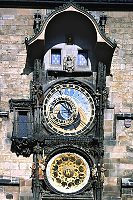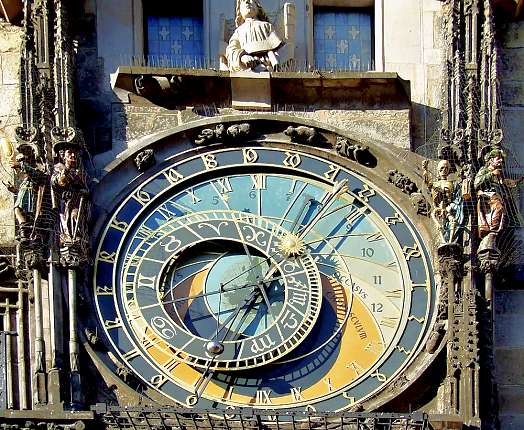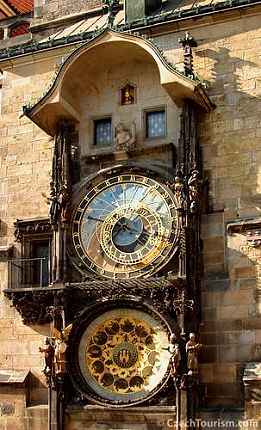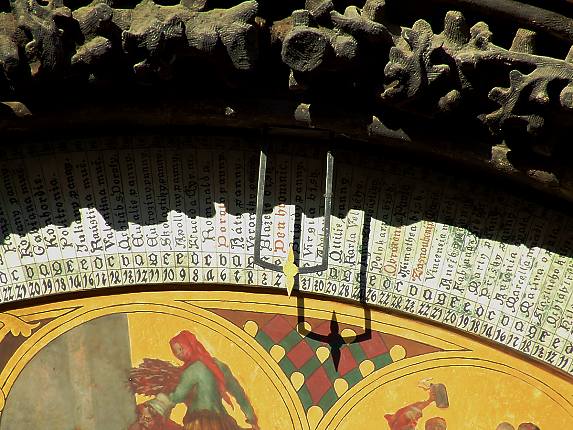ASTROLABE
Do you know how time passed in ancient Babylon or in the Middle Ages? When the day began and ended?
The astronomical clock shows all of this
ASTROLabe

Astronomický ciferník Pražského orloje je astroláb poháněný hodinovým strojem. Na něm se pak dají odečítat údaje, na jejichž ukazování je zkonstruován.
The astronomical dial of the Prague astronomical clock is an astrolabe driven by a clock mechanism. It is then possible to read information from the dial, which the mechanism was constructed to show.
From the astrolabe it is possible to read the movement of the sun and moon through the zodiac, the monthly phases, movements of the heavens, the daily date. The sun here passes through day and night, from the Tropic of Cancer to the Tropic of Capricorn, as it does in reality in the heavens.
Did you know that time was measured differently in the Middle Ages than it is today?
Time was not measured in minutes and seconds, but only in full hours. The specification of time into minutes was brought about by the needs of the modern age, primarily by the development of railways in the 19th century.
The astrolabe shows 4 times. Old Bohemian time, in which the day began and ended with sunset. German time, in which the day began at midnight and was divided into two 12-hour sections from midnight to midday and from midday to midnight. The astronomical clock also shows the sun time, in which the day has 24 hours. It is also unique worldwide in that it shows Babylonian time, in which the day began with the sunrise and ended with sunset, and was divided into 12 hours, the length of which changed according to the season of the year.
From the astronomical clock you can read the time of sunrise and sunset in Prague, as well as whether there is a full or new moon, the month and day of the year, and the sign of the zodiac in which the sun is that day.
GALLERY OF PRAGUE









